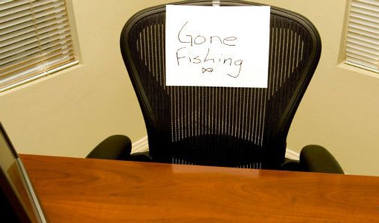Great Austrilian Sickie
The “Great Australian Sickie” is costing employers a fortune, but few organisations are taking the relatively simple steps required to fix the problem. When the president and chief executive of Toyota Motor Corporation Australia, Max Yasuda, complained to The Australian Financial Review last week about high levels of absenteeism, he reignited the perennial debate about unplanned absences.
Yasuda says as many as 30 per cent of employees in some part of the plant will take the day off as a “sickie” if a Friday work day follows a Thursday public holiday – as was the case with Australia Day recently.
There are some effective measures that have a good track record of cutting absenteeism, but employers are reluctant to come to grips with them, managing director of Direct Health Solutions Paul Dundon says.
Dundon estimated absenteeism was costing Australian business up to $30 billion per year, or $385 per day per employee. An acceptable level of absenteeism is an average 6.5 days of sick leave per year, he says. The Australian average is 9.4 days a year (five days for corporate staff), compared with seven days in the UK.
Some organisations – generally those with professionals as employees – aim for a rate of two to three days per employee.
In areas where workers have little control over their work and do not have access to flexible work practises – which allows them to take time off when they need it – average absences can rocket to 20 days a year.
“This can have a huge impact on operations. When there are so many people taking time off, clearly there is an issue about the way it is being handled and what is driving it,” Dundon says.
One mid-career consultant from a big-name firm said she took “sickies” that were really “stress leave”, but had never been quizzed over them.
“I don’t think you’re allowed . . . but I take them,” she says. “I think it makes up for the fact that people do heaps of overtime. It’s overlooked if they are a bit flexible with their interpretation of sick leave.”
She said sickies in the corporate world were not a big issue, and that the most she had seen taken was when she was working as a retail assistant.
“People just don’t show up. They don’t even get paid for it. Maybe it’s correlated to how dreadful your job is.”
One in 40 workers is off sick on any day. Dundon says 85 per cent of absenteeism is for sick leave, 15 per cent is for carers’ leave and other leave (of this, about 5 per cent is for transport, compassionate leave and personal matters, such as waiting for the plumber).
Meanwhile, there are government departments where the sickie is unheard of.
“Everybody feels that their work is so urgent and important so they couldn’t possibly,” explains one manager from a major department.
She says leaders work to instil motivation in their staff, which is partly unionised.
“They spend a lot of time ‘bigging’ everyone up, talking about how important all the work is and how they are the chosen ones,” she says.
But that culture does not permeate the whole public service.
“From what I’ve heard about other parts of the public service, there’s lots of hangers on and people who just sit around all day.”
In fact, commonwealth public servants took an average 11.1 days off work in 2010-2011.
The national president of the Australian Human Resources Institute, Peter Wilson, says organisations with an absentee problem should really take a look at themselves.
“Sometimes, it is very bad leadership and the employees hate going in to work,” he says.
High absenteeism is generally a sign that something is amiss.
It could indicate industrial unrest, job insecurity and redundancies and bad job design. “It does come down to enlightened leadership. If you have a draconian system people will play games,” Wilson says.
In terms of the “extended long weekend” complained of by Toyota, some companies demand medical certificates if a sick day butts onto a weekend or public holiday.
To do this, however, Toyota would have to negotiate this change with its unions, Dundon says.
His company offers an absentee management system wherein the employee phones in to a call centre to talk to a nurse if they want to take a sick day. People taking a sickie are more reluctant to fake it to a kindly nurse on the other end of the phone line.
In this way, Dundon claims he has halved absenteeism for some of his clients.
A manufacturer making chicken products saved $850,000 a year with a 28 per cent cut in sick leave, he says.
“Absenteeism is a point of failure between the employee, their manager and the organisation.”
Mary Wyatt, occupational physician and manager of Return to Work Matters, says sickness absence comes down to management. “It’s a reflection of the culture of the workplace.”
She says workers’ perceptions of how they are treated are a predictor of large amounts of sick leave – as is having a large number of workers doing the same thing.
“If you work in a call centre and there’s 100 other people there who can take over your job for the day, then you are more likely to take a day off work,” she says.

